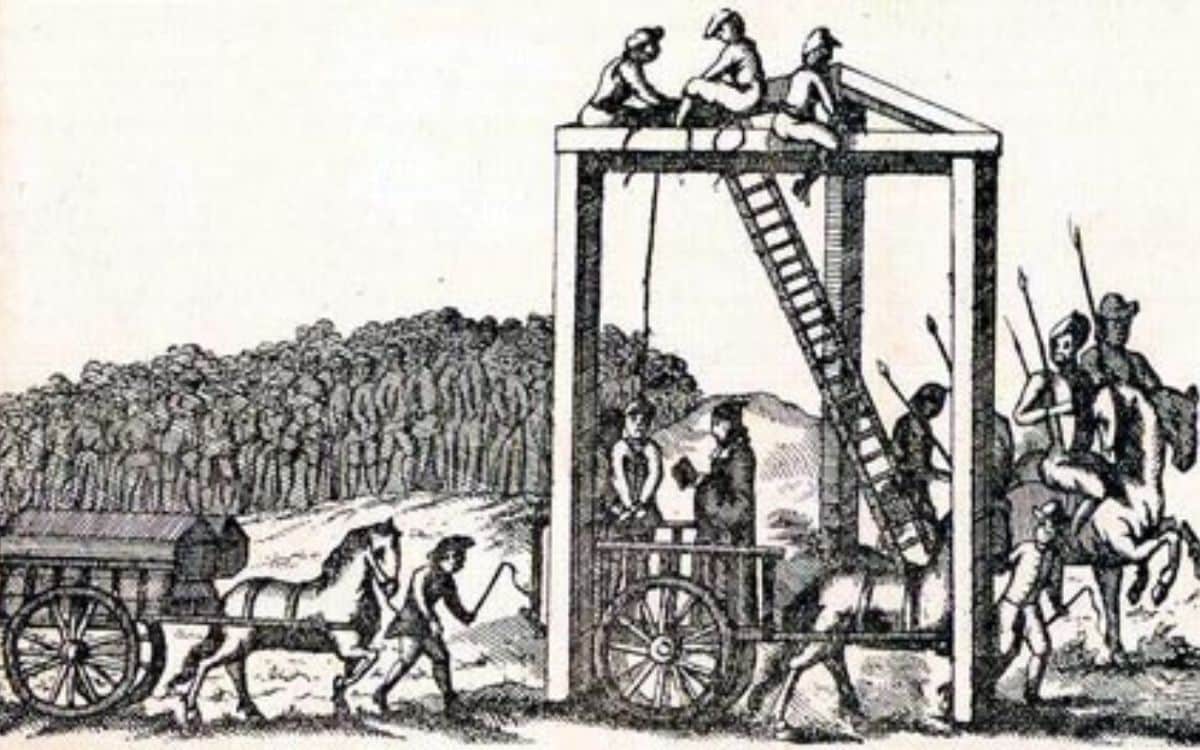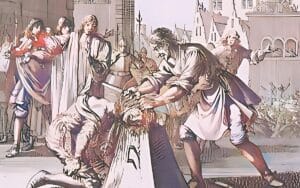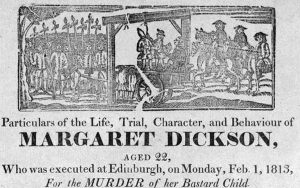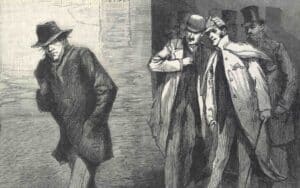The Tyburn Tree – the infamous gallows near modern-day Marble Arch – stood as a terrifying symbol of justice and retribution, putting fear into the hearts of Londoners for over 650 years.
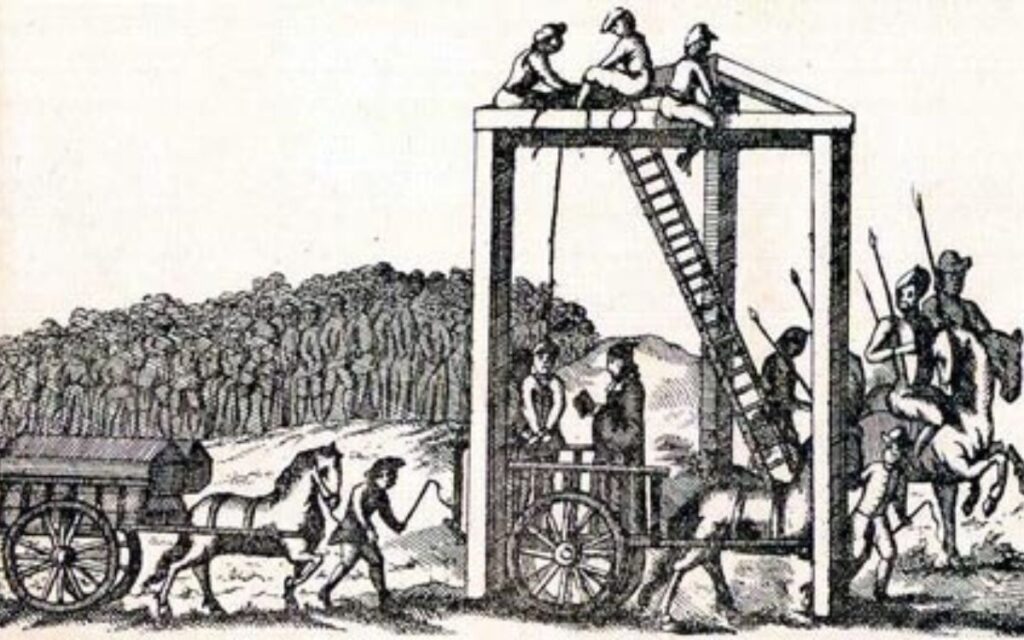
What was The Tyburn Tree?
The Tyburn gallows, also known as the “Tyburn Tree,” was a famous gallows in London that was used for public executions from the 12th century until the late 18th century.
The gallows were located near the present-day Marble Arch and Oxford Street, in an area then known as Tyburn.
At the time, the area was just outside the city limits and had a wide open space known as Tyburn Fields, which made it ideal for large crowds to gather and watch the spectacle of public executions.
The location of Tyburn also made it easily accessible from other parts of the city, as it was on the main route out of London to the west. This meant that condemned prisoners could be brought to Tyburn from Newgate Prison or other jails in the city with relative ease.
The Tyburn Tree consisted of a horizontal wooden beam mounted on two uprights, which was used to hang multiple prisoners at the same time. The gallows became infamous for the large number of executions that took place there, particularly during the 16th and 17th centuries.
It was also known for the macabre spectacle that accompanied each execution, as crowds would gather to watch the condemned prisoners being led to the gallows and to witness their final moments.
The Tyburn gallows were eventually dismantled in 1783 and public executions were moved to Newgate Prison.
The site of the gallows is now marked by a plaque on the traffic island at the junction of Edgware Road, Oxford Street and Bayswater Road.
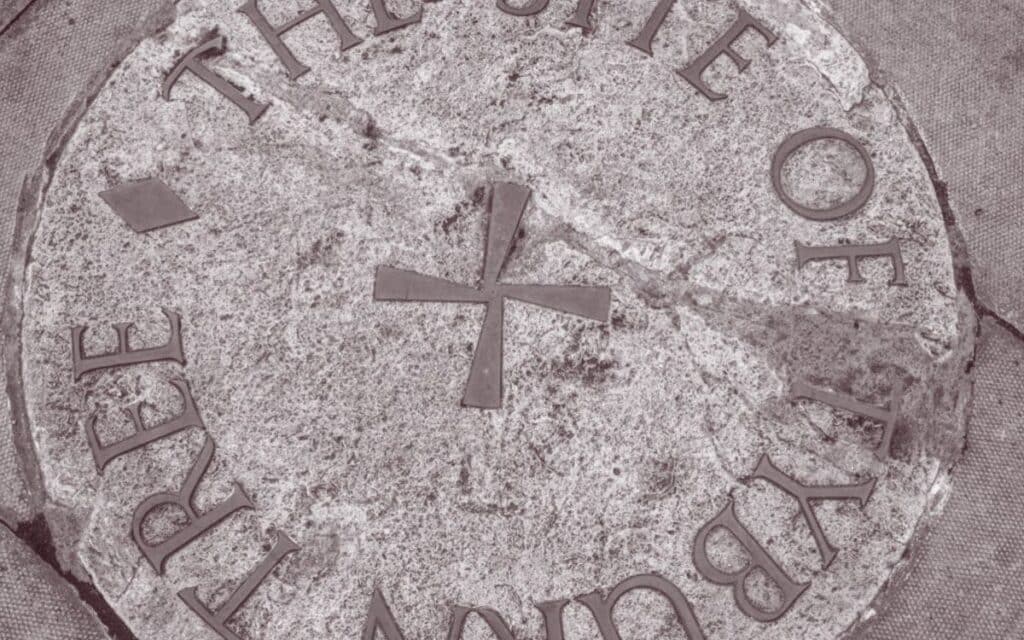
5 Tyburn Tree Execution Facts
- The Tyburn Tree was designed to allow for the execution of multiple prisoners at the same time. The beam was 18 feet long and could accommodate up to 24 prisoners.
- Hangings at Tyburn were often botched, resulting in a slow and painful death for the condemned. The hangman was sometimes forced to jump on the prisoner’s shoulders to hasten their death, or to strangle them with a rope after the drop failed to break their neck.
- After their execution, the bodies of the condemned were often left hanging on the Tyburn Tree for hours or even days, as a warning to other would-be criminals. The bodies were eventually taken down and often sold for dissection by medical students.
- The area around Tyburn became a hub for pickpockets, thieves and other criminals who preyed on the crowds that gathered to watch the executions. Some of these criminals even posed as “gallows bird” men who claimed to be able to predict the outcome of a trial for a fee.
- The last public execution at Tyburn took place in 1783, when John Austin was hanged for forgery. The gallows were then dismantled and the site was developed for housing and other purposes. However, the legacy of the Tyburn Tree lives on in the names of local landmarks such as Tyburn Road, Tyburn Convent and the Tyburn River.

